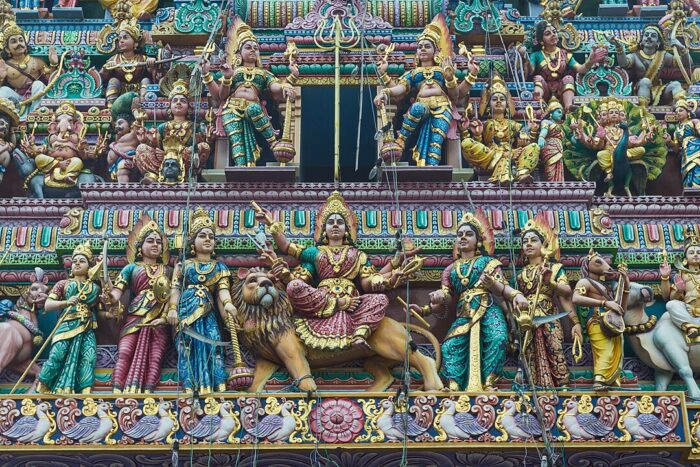Sri Veeramakaliamman Temple: A Guide to Singapore’s Oldest Hindu Temple
Sri Veeramakaliamman Temple, also known as Soonambu Kambam Kovil, is a Hindu temple in the heart of Little India in the southern part of Singapore. Built in 1881, the temple is dedicated to Sri Veeramakaliamman, the Hindu goddess and destroyer of evil. The temple is one of the oldest and most important Hindu temples in Singapore and attracts many local and foreign visitors.
The temple is a beautiful, ornate structure with intricate carvings and colorful decorations. The temple’s main deity, Sri Veeramakaliamman, is adorned with gold jewelry and silk sarees and is a sight to behold. Visitors can also see other deities in the temple, such as Lord Ganesha, Lord Murugan, and Lord Shiva.
Apart from its religious significance, the Sri Veeramakaliamman Temple is also an important cultural landmark in Singapore. It was built by Indian pioneers who came to work and live in Singapore and became a focus of early Indian social and cultural activities in the area. The temple has also played an important role in the history of Singapore and is a testament to the country’s rich cultural heritage.

History and Significance
Origins and Early History
The Sri Veeramakaliamman Temple, formerly known as the Soonambu Kambam Kovil, is one of the oldest Hindu temples in Singapore. It was built in 1881 by Indian settlers, particularly Bengali laborers, who arrived in Singapore seeking employment. The temple was initially a small shrine with carvings and inscriptions, but it was later expanded to become the beautiful architectural marvel it is today.
World War 2 and the Temple
During World War 2, the Sri Veeramakaliamman Temple became a refuge for the local community. The temple was located in the heart of Little India, providing shelter for many people during air raids and bombings. The British colonial government also used the temple as a base for their operations.
Post-War Developments
After the war, the Sri Veeramakaliamman Temple played a vital role in the post-war development of Singapore. The Charities Commissioner, R Selvaraju, and Ratha Krishnan Selvakumar were instrumental in the temple’s development. They helped to raise funds through cheques, loans, and cash loans, which were used for the temple’s disbursements and Indian social-cultural activities. The temple also…
Click Here to Read the Full Original Article at Out of Town Blog…
